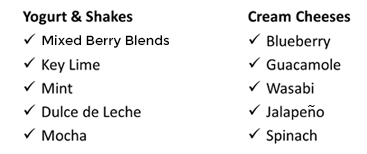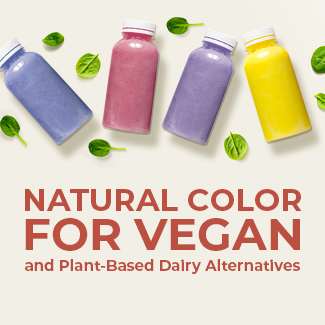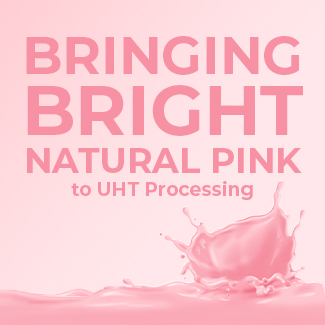Natural Blue and Green Color Strategies for Dairy
According to research conducted by Sensient earlier this year, consumers are more concerned about synthetic colors when it comes to dairy categories than any others. This is not surprising, since dairy has traditionally enjoyed an image as a fresh, locally sourced, and minimally processed food. Additionally, one of the key growth categories for food stores is Greek yogurt, which generally has strong health credentials in consumers’ minds. In fact, yogurt was the first category to convert from synthetic to natural colors on a large scale.
With recent flavor innovations, particularly in cream cheese, protein shakes and yogurt, we have seen more demand for natural blue and green shades. Additionally, demand for 4MEI-free brown shades that take advantage of blue building blocks is on the rise. Some examples include:

Fortunately, these days we have a couple of great color sources that enable us to achieve most of the desired blue and green shades.
Spirulina
Spirulina is our closest match for the elusive Blue #1 shade and works extremely well in many dairy applications, especially yogurt, ice cream, and novelties. Spirulina is generally not used in dairy-based beverages or cream cheese. Additionally, spirulina is not an option for yogurt fruit preparations, but rather the white mass itself.
There are two main limitations to the use of spirulina. Firstly, the color will not survive anything more than a minimal heat step in the process, generally not more than 110 degrees Fahrenheit. Additionally, in high water activity, spirulina has a tendency to precipitate and fade.
In general, spirulina is a great option for any application with a pH of 4 or above, low water activity, and minimal heat processing.
Sensient Natural Blue
Our second option is Sensient Natural Blue, which can be used in any dairy application and has some distinct advantages over spirulina. Firstly, it can survive high heat processes like UHT or HTST processing and is quite stable in high water activity applications.
From a shade standpoint, Sensient Natural Blue produces a denim-like Blue #2 shade in most dairy products. At lower pH levels typically found in fruit preparations, Sensient Natural Blue will yield more of a purple shade.

Green
Using our two key blue sources, we can now produce a range of greens depending on the desired shade. For example, the combination of turmeric and Sensient Natural Blue will produce a bright and very clean green ideal for a key lime flavored product. Alternately, annatto and beta can be combined with blue to produce a deeper green.
Often we are asked about chlorophyll. Chlorophyll itself is generally not very stable without the addition of a metal ion. In the EU, copper chlorophyllin is permitted as a food color. However, in the US, usage is very limited. At some point in the future this may offer an alternative. However, it is generally not a very bright green and some have questioned its ‘naturalness’.
With many dairy categories offering nice growth opportunities, we see a lot of new flavors and innovation in dairy. The good news is that we have some good natural blue and green options with more likely to be available in the future. Using natural color should not mean making sacrifices when it comes to shade performance.







